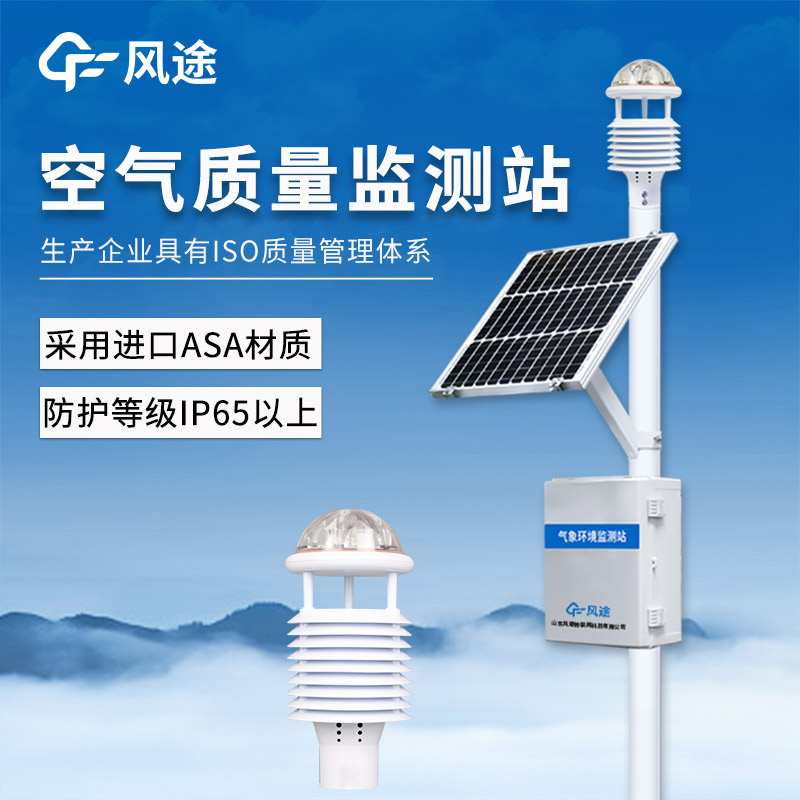Tianyi Sensor IOT Technology Co., Ltd
Sales Manager:Ms. Emily Wang
Cel,Whatsapp,Wechat:+86 15898932201
Email:info@fengtutec.com
Add:No. 155 Optoelectronic Industry Accelerator, Gaoxin District, Weifang, Shandong, China

Sales Manager:Ms. Emily Wang
Cel,Whatsapp,Wechat:+86 15898932201
Email:info@fengtutec.com
Add:No. 155 Optoelectronic Industry Accelerator, Gaoxin District, Weifang, Shandong, China
time:2025-07-04 08:51:33 source:Weather Station viewed:174 time
Good air quality is the fundamental guarantee for a healthy life. To more effectively manage and improve the ambient air quality, air quality monitoring stations have emerged, which have strongly promoted the refined management of ambient air quality.
Air quality monitoring stations are compact in size, but integrated with a variety of high - precision sensors. They can conduct real - time monitoring of the concentrations of major pollutants in the air, such as PM2.5, PM10, sulfur dioxide, nitrogen dioxide, carbon monoxide, and ozone. They can also monitor meteorological indicators such as temperature, humidity, wind direction, and wind speed. Through wireless data transmission technology, the monitoring stations transmit the collected data to the background management system in real - time, providing first - hand air quality information for relevant departments.
By scientifically and rationally arranging air quality monitoring stations in the city, a tight - knit monitoring network can be established. When micro - monitoring stations are widely set up in key areas such as the main urban area, industrial parks, transportation hubs, and residential communities, a grid - based monitoring system is formed. Once the air quality in a certain area is abnormal, the monitoring station can quickly detect the data change and issue a timely warning. Based on these accurate data, relevant departments can quickly identify the sources of pollution, such as dust from construction sites, waste gas emissions from industrial enterprises, and motor vehicle exhaust pollution, and then take targeted control measures.
For industrial parks, in the past, due to the inaccurate supervision of enterprises' waste gas emissions, air pollution occurred from time to time. After installing micro - monitoring stations, it is possible to real - time monitor the air quality around each enterprise in the park. When it is found that the pollutant concentration near an enterprise exceeds the standard, the environmental protection department can immediately require the enterprise to inspect and maintain production equipment and pollution - control facilities, and promptly rectify the problem of excessive emissions, effectively reducing the spread of pollutants.

Against the backdrop of climate change, extreme rainfall events are becoming increasingly frequent, posing severe challenges to flood control and drought relief work. As an important technical means to address these challenges, the rainfall monitoring station is playing an increasingly significant r...
Portable Weather Station is an innovative type of equipment widely used in meteorological monitoring in recent years. Utilizing highly integrated sensors and intelligent technology, it condenses multiple observation functions of traditional weather stations into a lightweight, handheld or portable f...
The operation of air quality monitoring stations relies on a comprehensive grid-based environmental supervision system. This system takes towns, communities (and villages) in cities as basic units, and divides them into air pollution prevention and control management grids according to different lev...
In the daily operation and maintenance of photovoltaic power plants, testing equipment is a key tool to ensure power generation efficiency and system stability. Among them, the EL detector and I-V Curve Tracer are two widely used professional devices that evaluate the performance of photovoltaic mod...